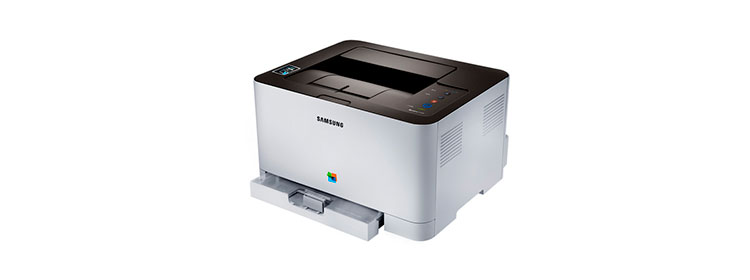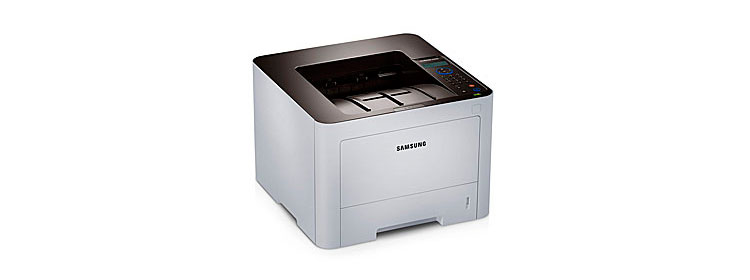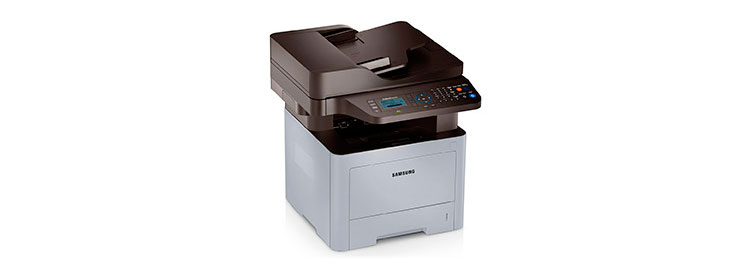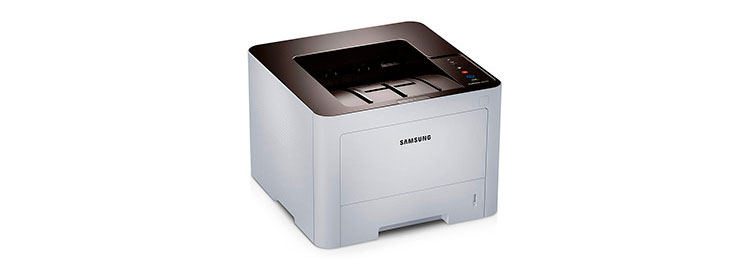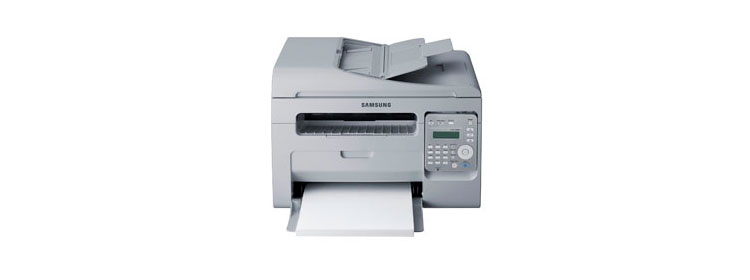Small enough to serve as a personal monochrome laser printer, the Samsung Xpress M2835DW ($159.99) is also capable enough to be a good fit as a shared printer in a micro office. It doesn’t offer quite enough to topple the Editors’ ChoiceXpress M2825DW$122.00 at Amazon it’s replacing in Samsung’s line. It costs a little more and the competition today is a bit tougher, but it’s still a strong contender.
The M2835DW$159.00 at Amazon lets you connect via USB, Ethernet, Wi-Fi, and Wi-Fi Direct. If you connect it to a network, you can print though the cloud, and from Android and iOS smartphones and tablets through an access point. Thanks to Wi-Fi Direct, even if you connect it to a PC by USB cable to use it as a personal printer, you can print directly from your mobile device.
In addition, you get NFC support, which means that if you have a compatible mobile device, you can connect simply by touching that phone or tablet to a clearly marked spot on the printer, and then print using Samsung’s app. During testing, I ran into a minor problem with the NFC connection at first with a Samsung Galaxy S III, but after turning everything off and back on again, the connection worked as promised.
Paper Handling and Setup
At only 8 by 14.5 by 13.2 inches (HWD) and 16.4 pounds, the M2835DW is small enough to comfortably share a desk with and light enough for one person to move easily, which helps make it a good choice as a personal printer. Even so, it offers ample paper handling for a shared printer, with a 250-sheet input tray, a duplexer (for two-sided printing), and a one-sheet manual feed. This should be more than enough for most personal or micro-office use.
For my tests, I connected the printer using its Ethernet port and installed the drivers on a system running Windows Vista. Setting the printer up on a network was absolutely typical for a mono laser.
Speed and Output Quality
The engine rating for the M2835DW is 29 pages per minute (ppm), the same as for the Samsung M2825DW. Not surprisingly, the two printers came in at essentially the same speed on our tests. I timed it on our business applications suite (using QualityLogic’shardware and software for timing), at 9.7ppm, compared with 9.9ppm for the Samsung M2825DW. (A 0.2ppm difference at this speed isn’t significant.)
The 9.7ppm translates to solid, but not particularly fast, performance for the price. TheBrother HL-2270DW$79.99 at Amazon, for example, came in at 11.7ppm. Even more impressive is the Canon imageClass LBP6200d$126.75 at Canon, which came in at 11.1ppm for its official speed in its default duplex setting, and a much faster 14.5ppm when set to simplex (one-sided) printing. However, the Canon LBP6200d connects by USB only, which is fine for using it as personal printer, but makes it a poor choice for a shared printer.
Output quality for the M2835DW is typical for a monochrome laser across the board. The text score in my tests fell in the middle of a fairly tight range that includes the vast majority of monochrome laser printers. Output is suitable for virtually any business use, but not quite good enough for serious desktop publishing applications.
Graphics, similarly, are easily good enough for any internal business need. Most people would also consider them good enough for PowerPoint handouts or the like. Photos quality is roughly newspaper-level.
The Samsung M2825DW earned our Editors’ Choice not because of any particularly notable feature, but because of its balance of features. Both the Canon LBP6200d and the Brother HL-2270DW will give you more impressive speed, for example, but they also score slightly lower for quality.
The good news about the Samsung Xpress M2835DW is that it essentially matches the Samsung M2825DW on speed, output quality, and paper handling. Unfortunately, given the slight boost in price compared with the older model (which is still widely available online), and that some of the competition—most notably the Canon LBP6200d—delivers significantly faster speed, the M2835DW doesn’t offer quite enough to earn the Editors’ Choice distinction. That said, it’s still an attractive choice, and it can certainly be a good fit as either a personal printer or as a shared printer in a micro office.



